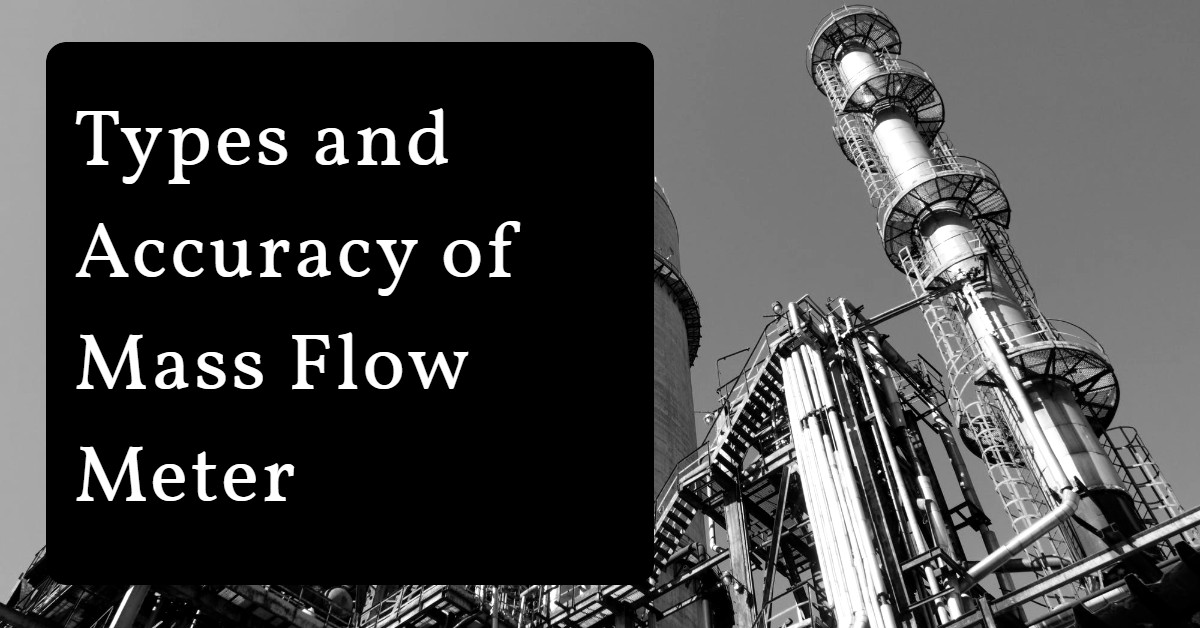Technology
Types and Accuracy of Mass Flow Meter
The names given to mass flow meters rely on the industry that uses them and includes flow gauge, flow indicator, liquid meter, or flow rate sensor.

A mass flow meter holds the amount of mass of a gas or fluid moving by a system at a precise point in the flow system. Mass flow meters have restored other forms of flow rate analysis because of their precision, accuracy, and resolution of flow estimation. They are used to hold linear, nonlinear, mass, and volumetric flow rates. The names given to mass flow meters rely on the industry that uses them and includes flow gauge, flow indicator, liquid meter, or flow rate sensor.
How Does a Mass Flow Meter Work?
Though all mass flow meters hold flow rates, each kind takes its analyses in several ways. They differ according to the material being covered, the states, and the required accuracy. There is not any regulated method for controlling flow rates.
Flowmeters are essential for production amenities to give explicit and precise readings about liquid flow to assure maximum operational performance. Flow analyses provide signs of the overall appearance of the system.
Kinds of Mass Flow Meters
Flow can be either an open or closed channel, where an available way is open to the environment, and a closed conduit is enclosed. With open channel flow, the power of pressure creates the flow. Pressure variations in the channel cause shut conduit flow.
Vortex
Obstacles in liquid flow form vortices downstream, with a significant liquid flow rate, where vortex dropping occurs and the case where alternating low-pressure zones are created.
The low-pressure zones block moving towards the low-pressure zone, where sensors measure the spirals to gauge the power of the flow.
Coriolis
With Coriolis mass flow meter, the fluid moves by U-shaped tubes fluctuating in an angular harmonic waving. The tubes distort, and an extra vibration element is added to the change, making a measured state shift in the tubes. Coriolis flowmeters are very suitable, more reliable than ± 0.1%, with a turndown rate of more than 100:1, and can be used to hold a fluid’s pressure.
Supersonic
The frequency of an indicated sign is qualified by the speed and control of the fluid flow. If the liquid is running towards the transducer, the rate of the sign will rise. As it runs away, the frequency of the returning signal drops. The frequency variety meets the repeated number minus the starting frequency and can measure fluid flow rate.
Gyroscopic Mass Flow Meter
A gyroscopic flow meter has a tube in a round or square form with oscillating vibration at a fixed angular speed on the A axis. As the liquid moves by the circuit, precession occurs on the B axis, which is regulated by the variation of the sensor part. The energy on the rotating pipe is estimated to restrict the mass flow.
Conclusion
Mass flow meters regulate the mass of a gas or liquid moving by a system at a fixed point. Mass flow meters hold linear, nonlinear, quantity, and volumetric flow rates and have various names relying on the trade and their use. Fluid flow can be either an open channel or closed tube, where an open channel is open to the environment, and a closed conduit is included.

